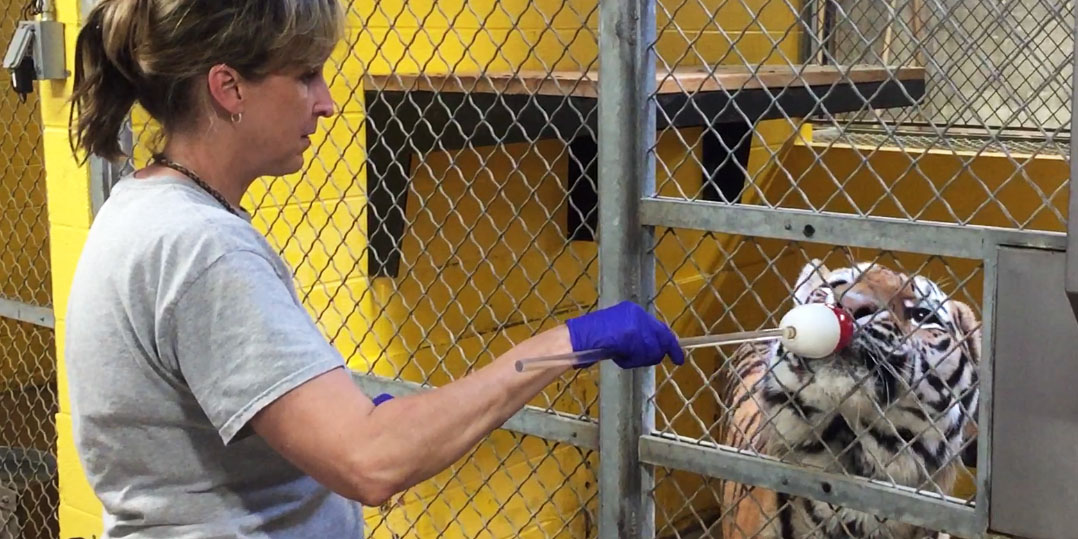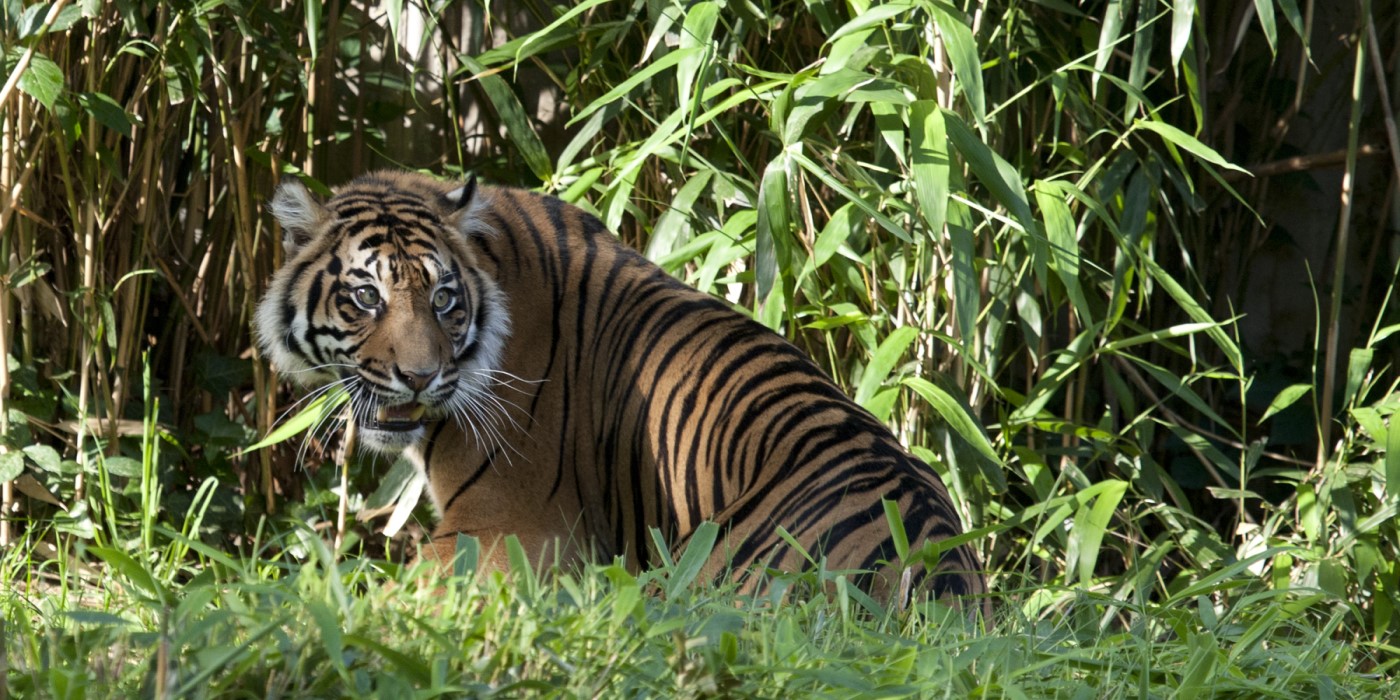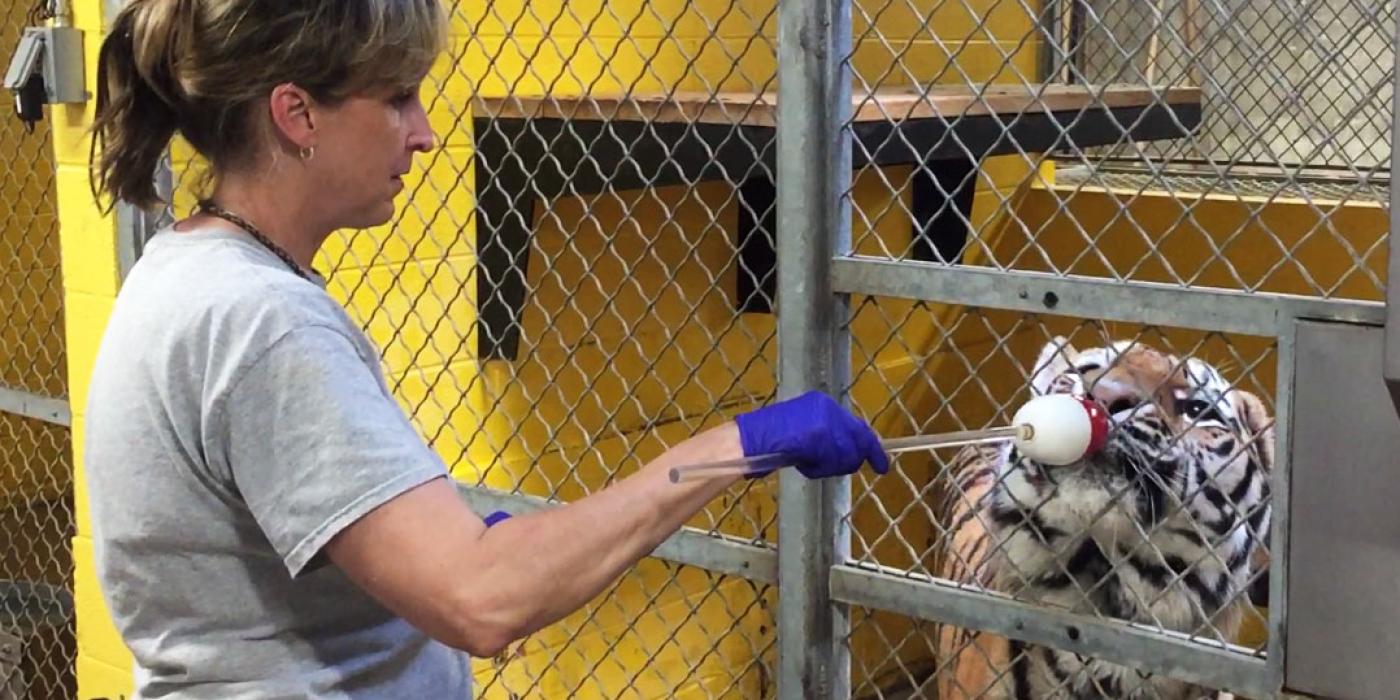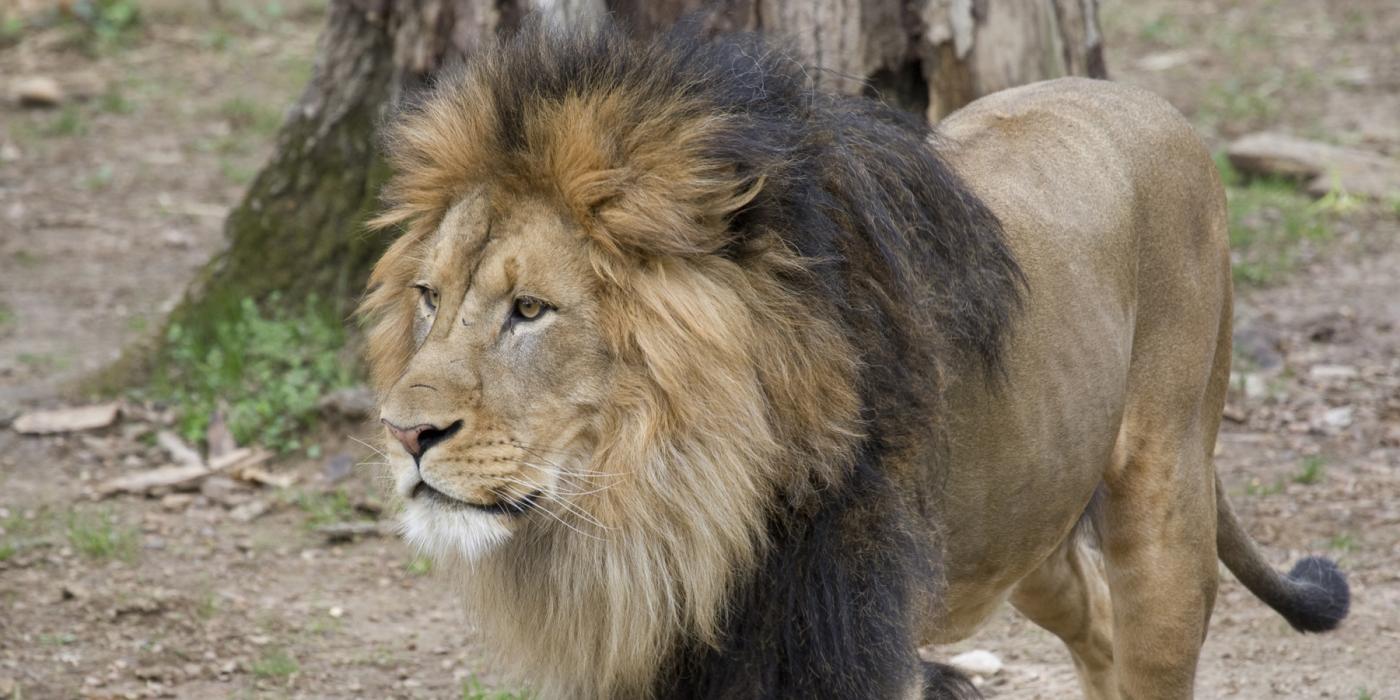How to Care for Tigers
Use your tiger eyes to see what it takes to care for the largest cat in the world and 2022’s Lunar New Year animal: the tiger! Get a peek inside the world of animal keeper Dell Guglielmo, who cares for two Amur tigers and one Sumatran tiger at the Smithsonian’s National Zoo.

Well-known for their distinct orange and black striped coats, tigers are a popular animal to see at the Zoo. Their personalities are as individualistic as their stripes, making them some of the most charismatic animals, too.
Smithsonian’s National Zoo is home to two subspecies of tiger: Amur and Sumatran. Sumatran tigers are the smallest subspecies, while Amur tigers are the largest. It’s fascinating to see how their environment has shaped each. Sumatran tigers come from a large, hot island in Indonesia known as Sumatra. Their coats are short and sleek with vivid colors — a very bright orange contrasting against dark black stripes — which help them blend into the shadows of the jungle.
Amur tigers live in eastern Russia, northeastern China and northern regions of North Korea, where it can get very cold. They used to be called Siberian tigers, but they only live in a tiny part of Siberia along the Amur River. These tigers tend to be big and fuzzy, with a very dense coat to keep them warm. Their colors are more muted to blend in with snowy landscapes.

To mimic their natural landscape, the tigers’ outdoor habitats have tiers providing both open and secluded spaces. Washington D.C.’s weather provides opportunity for both subspecies to experience their natural climate. The summer heat is perfect for our Sumatran tiger, and the winter cold and snow is ideal for our two Amur tigers—though Amur tigers are also used to hot summers.
The first time our male Amur tiger, Metis (his name is pronounced like King Midas), went out into his yard, it was a freezing cold November day. I was sure he would just poke his nose out, feel the cold and go right back into his nice warm den. But he ran outside. He was so warm compared to the cold air, that steam was coming off his coat and blowing out of his nose. After a few minutes, he ran back inside, and I thought that was that. But before we could close the door, he rushed back out again and jumped into the icy moat! After swimming around for a while, he leaped out, shook and zoomed around the yard. Then he jumped back into the moat! I stood out there in the freezing cold for an hour watching him. Clearly, he likes the water and doesn’t mind the cold.

A key component to caring for animals is to keep them as healthy as possible. Our tigers get meat every morning. We hide any medicine they need in the food they get first. This ensures they take the medicine, while we maintain a safe distance. To provide some variety in their diet, and to help keep their teeth sharp and jaws strong, we sometimes give them cow bones or a whole rabbit carcass.
Caring for tigers is very different from caring for other big cats, like lions. Where lions are social animals who prefer to live in groups, tigers are solitary. Tigers tend to be a little shyer and are not as open to social bonds. The only time tigers tolerate living together is when they are breeding. Metis and Nikita are recommended to breed through the Amur Tiger Species Survival Plan. They haven’t successfully bred yet, but we put them together for a little while each month in hopes we may have cubs soon to help bolster the Amur tiger population.
Nikita, our female Amur tiger, is especially guarded and tends to be cautious of new situations. It took me almost two years to build a relationship with her. When she first got here, she would stay as far away from the keepers as possible, even if we were just walking down the hallway adjacent to her indoor enclosure. Now, she’ll lift her head and look at us, but she stays put, because she knows we aren’t going to do anything to hurt or scare her. We are still working with all the tigers to approach the mesh so we can give them injections, examine their teeth and paws, and take blood draws.
Metis is much more laid back. He is not as food motivated as Nikita but is much more curious of new things. He has been very calm in breeding introductions with Nikita, which makes them a good match.

Damai’s personality is somewhere in between. She is neither as shy as Nikita nor as laid-back as Metis. She’s been at the Zoo for almost 11 years, so she knows all the routines and expectations. However, she is feisty when it comes to food. If she’s hungry, she’s going to let you know about it.
There are fewer than 500 Amur tigers left in the wild. That’s why my job is so important. Caring for tigers here at the Zoo ensures this species has a future. Wild tigers’ habitat and prey numbers are declining. Conservationists are working to protect tiger habitat, find safe and healthy ways for tigers and humans to co-exist, ban and police tiger poaching, and monitor wild tiger populations and trends. But these problems can’t be solved overnight. Until we find concrete solutions, zoos provide a safe place to preserve tiger population numbers, study their biology and ensure their species survives.
A lot of people see TV shows with tigers and think I just cuddle with them all day. But I don’t. Tigers are wild animals. When people ask me about being a tiger keeper, I like to remind them it’s important to remember your boundaries when you take care of animals in a zoo setting. You’re feeding them and training them, but they’re not pets, and you can help protect tigers as a species by treating them with the respect a wild animal deserves. Don’t participate in any tourism activity that lets you take a selfie with a tiger or hold a baby tiger, because most of those kinds of experiences involve irresponsible breeding of tigers, as well as allowing tigers to fall into the hands of people who don’t have the best of the species at heart, like people who want to use them as status symbols.
I have been a keeper for more than two decades. I love my job because I get to care for these animals and get to know them as individuals. They’re here, at the Zoo, as a reminder of what we as humans might not have one day if we don’t protect them and the environment.
Give a roar for tigers this Lunar New Year and February! Meet Metis, Nikita or Damai when you plan your visit today.
Hunting for more stories from our keepers? Check out a variety of stories from all over Smithsonian’s National Zoo and Conservation Biology Institute here.
Related Species:



